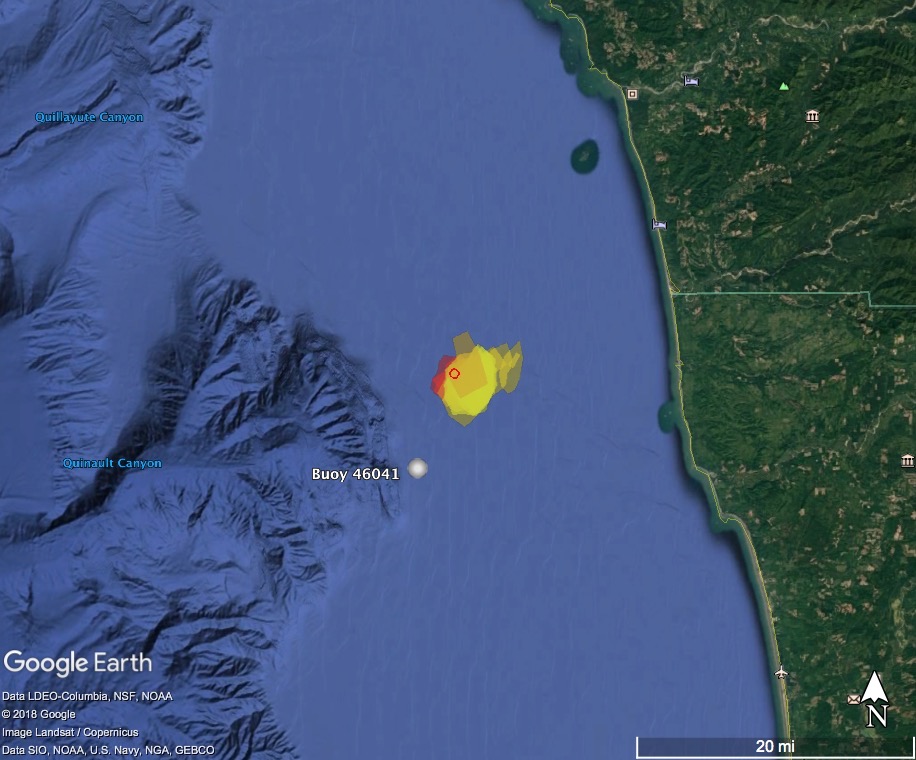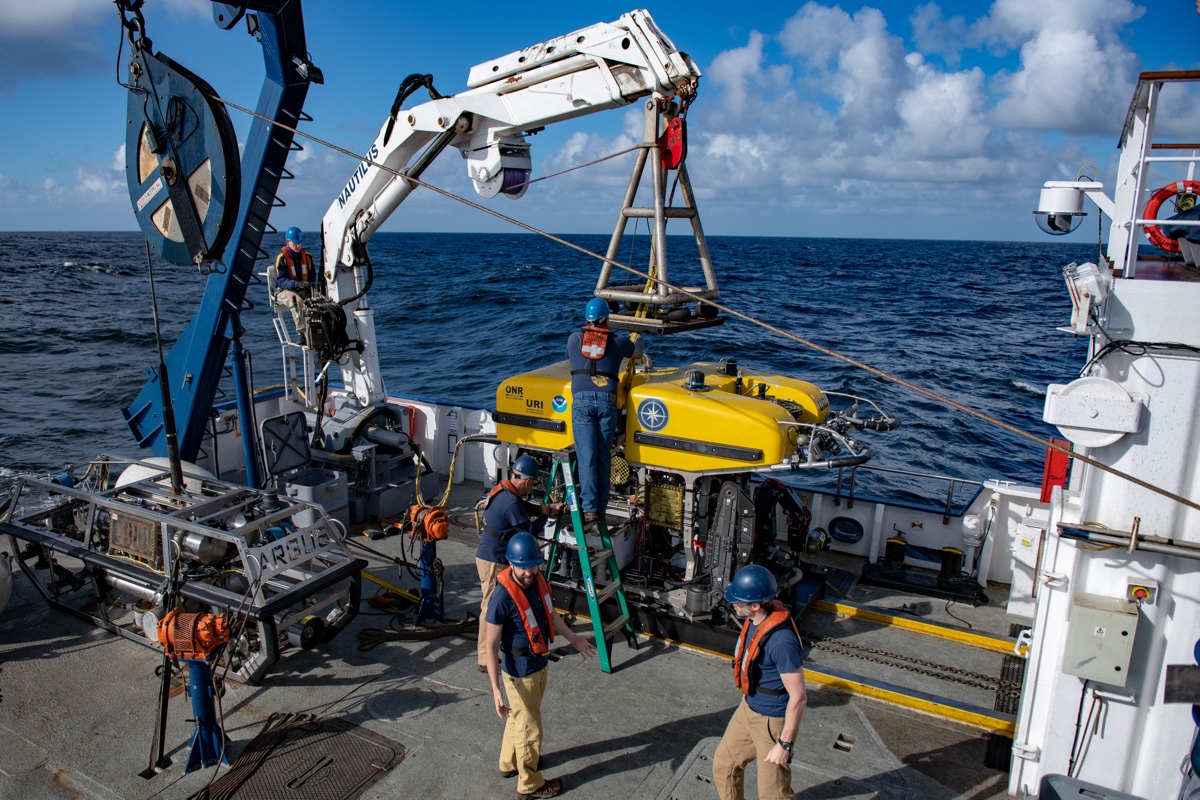Traces of 'Sonic Boom' Meteorites Found on Ocean Floor
The first mission designed to hunt a meteorite that crashed into the ocean has now discovered what may be tiny fragments of the meteorite's crust, researchers say.
On March 7, three National Oceanic and Atmospheric Administration (NOAA) weather stations detected the fall of a meteorite about 15.5 miles (25 kilometers) off the coast of Washington state. "The fall was widely seen around local areas and widely heard around local areas — it came with some loud sonic booms," Marc Fries, the cosmic dust curator for NASA, told Live Science.
Fries estimated this fall might yield about 4,400 lbs. (2,000 kilograms) of meteorites. He also calculated the largest meteorite might weigh about 9.7 lbs. (4.4 kg) and have a diameter of about 5 inches (12 centimeters). [Crash! The 10 Biggest Impact Craters on Earth]
"This is the largest meteorite fall I've seen in 20-plus years of radar data," Fries said.
The details the scientists had regarding the fall suggested the meteorite was unusually strong, Fries said. This knowledge, in combination with the fact the meteorite landed on a soft seafloor as opposed to dry land, suggested this ocean fall might yield large, relatively intact meteorites for scientists to study.

Until now, scientists had never intentionally recovered a meteorite from the ocean, Fries said. In the past, researchers had accidentally discovered a couple of meteorites from drilling samples taken from the seafloor, he noted. However, this latest endeavor is the "first intentional search for meteorites from the ocean," Fries said.
Ocean Exploration Trust, a scientific research nonprofit organization, worked with scientists from NOAA's Olympic Coast National Marine Sanctuary, NASA and the University of Washington to locate any meteorites from this fall.
Get the Space.com Newsletter
Breaking space news, the latest updates on rocket launches, skywatching events and more!
On July 1, the Exploration Vessel Nautilus investigated about 0.4 square mile (1 square kilometer) of water in the Olympic Coast National Marine Sanctuary, located off the coast of Washington state, sailing about 330 feet (100 meters) above the seafloor. The ship used multibeam sonar to map the seafloor, but the team "didn't really see any smoking-gun signature of a meteorite, any change to the texture of the seafloor," Nicole Raineault, leader of the expedition and the vice president of exploration and science operations at the Ocean Exploration Trust, told Live Science.
On July 2, the scientists deployed two remote-controlled submarines — the Hercules and the Argus — to investigate the seafloor. If the researchers saw anything interesting through the cameras of these remotely operated vehicles, they directed the robots to pick them up using either magnets or a suction pump.

The researchers did not spot any meteorites, as the seafloor was very soft, "and in all likelihood, any meteorites sank into the seafloor," Fries said.
However, after returning to the lab and spending 6 hours analyzing sediment, the team identified what seemed to be meteorite fragments in the last sample they had gathered, Fries said. "So far, we see two small fragments," he said.
"The meteorite fragments are small, melted pieces of rock," Fries said. Each about 2 to 3 millimeters [0.08 to 0.12 inches] large, they likely came "from the outside of a meteorite. When a meteor enters the atmosphere, it accrues what's called a fusion crust — "you have flash-melting of the rock, which coats the rock like pottery glaze," he said.
The reason Fries thinks these fragments are from the recent meteorite fall is that they are "basically made of glass, and such flash-melted glassy materialsdo not tend to last long in seawater." Moreover, these fragments "looked like they came from a small pit in the seafloor," Fries said. "It's some evidence that they came from something that fell."
Now, Fries and his colleagues will analyze these fragments in the lab to see what they are made of. "If they are meteoric in origin, we can tell what kind of meteorite they came from," he said.
Additional smaller meteorite fragments may lurk in sediment that the researchers collected. "We regularly deal with specks naked to the eye," Fries said. "We can deal with smaller things."
There are no plans to return to the site tolook for more meteorite fragments, but, Fries said, "I certainly wouldn't mind going."
Originally published on Live Science.
Join our Space Forums to keep talking space on the latest missions, night sky and more! And if you have a news tip, correction or comment, let us know at: community@space.com.

Charles Q. Choi is a contributing writer for Space.com and Live Science. He covers all things human origins and astronomy as well as physics, animals and general science topics. Charles has a Master of Arts degree from the University of Missouri-Columbia, School of Journalism and a Bachelor of Arts degree from the University of South Florida. Charles has visited every continent on Earth, drinking rancid yak butter tea in Lhasa, snorkeling with sea lions in the Galapagos and even climbing an iceberg in Antarctica. Visit him at http://www.sciwriter.us










